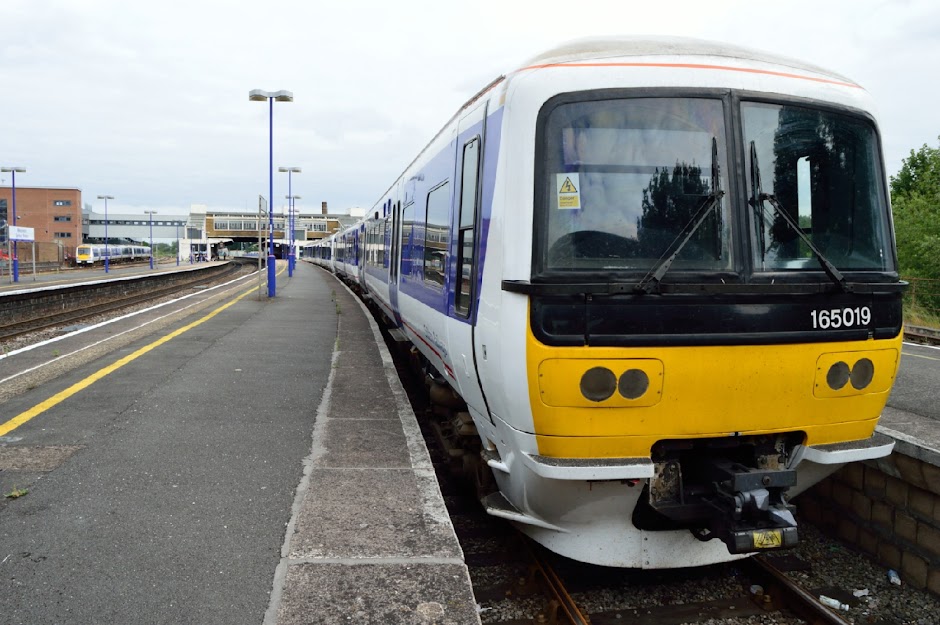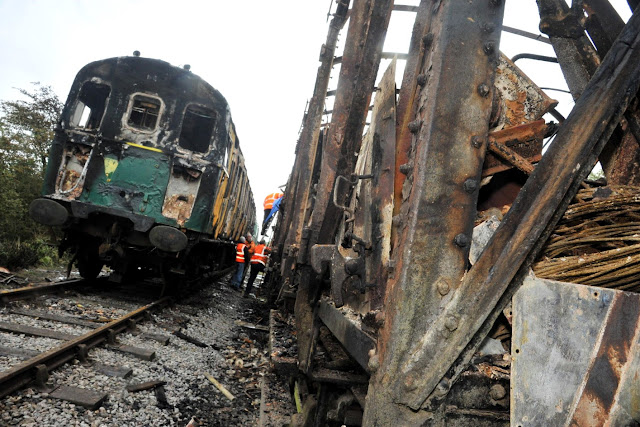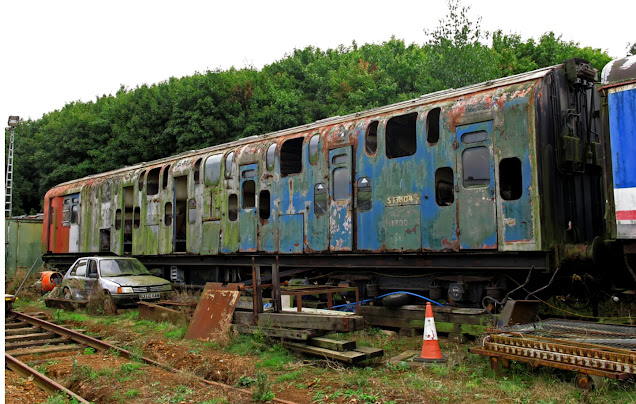GWR Leamington Spa Station Platform Signs  |
| Photo: Charles Moorhen |
I visited Leamington Spa railway station a few summers ago on a train spotting/photography session, and couldn't resist taking this picture of the railway platform sign surrounded as it was by a fantastic variety of colourful flowers.
It was a pleasant encounter to discover an old-fashioned wooden platform sign such as this which for me brought back memories of the days of locomotive smoke, steam and whistles; the waving of green flags and the morning milk train - when compared to the plain, bland metal platform signs that are so numerous at stations across the UK now.
During the summer of 2016 I once again visited Leamington Spa station, this time during the evening. During a break in the railway traffic, where I captured a number of diesel multiple unit images, I decided to photograph the same sign again; this time with a tripod and a long exposure.
After a few trial exposures I believed that I'd got it right, and back at home I was pleased when I compared the two images on the computer.
I hope that as a new or regular blog visitor you will also enjoy them.
 |
| Photo: Charles Moorhen |
Don't forget to subscribe to 'Along These Tracks' railway blog to get all new posts and updates sent directly to you.
Blog update:
Previous photos posts are now easier to find.
All blog posts are now listed alphabetically on the right side of your screen; under the heading, 'Previous Photo Posts'.
"I hope this makes your search easier".
Previous photos posts are now easier to find.
All blog posts are now listed alphabetically on the right side of your screen; under the heading, 'Previous Photo Posts'.
"I hope this makes your search easier".






















